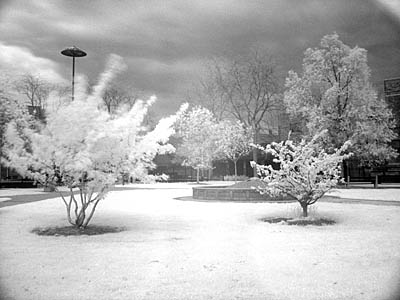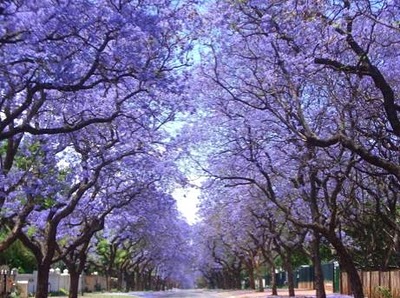[ame="http://en.wikipedia.org/wiki/Phytochrome"]Phytochrome[/ame] is a plant photoreceptor pigment that responds to far-red light.
I think a prime example of why plant colour is a more complex issue than available wavelengths and photopigment is the question "why aren't plants black?".
Perhaps it is simply because black plants would be at higher risk of injury from exposure to UV rays or temperature differences over the course of a day. Perhaps it is because the maximum efficiency of photosynthesis is determined by the chlorophyll inside the plant or some other biological mechanism, and decreasing the albedo would do little to increase it- while leading to a higher potential of the aformentioned negative effects occuring.
Of course in this case, why are we even talking about 'plants'? One would expect that on an alien world, wholly alien kingdoms of life would arise, which could have more in common with fungi or animals than plants, or could be quite unlike either. Even on Earth, the role of "thing that does photosynthesis" isn't limited to plants- lichens are a weird symbiotic relationship between fungal and algal partners. In certain parts of the ocean, the role of a sessile photosynthesiser is taken up not by plants, but by corals- colonies of cnidarian animals. They're not even the organism doing the actual photosynthesis- that role is performed by the symbiotic algae (or zooxanthellae) they contain. Corals
are quite colourful.
Even more "plant like" organisms are not in fact plants- kelp is a member of the kingdom [ame="http://en.wikipedia.org/wiki/Chromalveolata"]chromalveolata[/ame]. The [ame="http://en.wikipedia.org/wiki/Red_algae"]red algae[/ame] are also a fairly interesting group.
On Earth, a planet orbiting a G-class star, there are multiple different photosynthesisers, photopigments, and colorations present. Perhaps the success of a group of photosynthesisers (and thus the predominant colour of the vegetation) depends on the physiological adaptations of the group as a whole, rather than photopigment alone- in that case an organism with a less efficient photopigment (either overall or in regards to the local available spectrum) might become more successful and diverse than a more efficient photosynthesiser.
Even then, chlorophyll isn't the only pigment in plants on Earth- plants also contain carotenoids (carotenoids are what colour carrots orange, tomatoes red, and flamingoes pink). The carotenoids in leaves are visible when the chlorophyll content drops, such as during autumn before leaves fall from trees.
Then there's also structural colour; it may not do anything for photosynthesis, but it does affect the appearance of the plant. In IR photographs, broad-leaved plants typically have a very bright appearance;
This is not due to some sort of pigment in the leaves that is highly reflective to IR, but rather because the leaves contain minute air pockets that reflect light (in a manner similar to how foam or snow appears white). The needles of coniferous trees are denser, and thus appear darker in IR images;
As for stellar class, blue stars are less common than Sol and shorter lived, which makes them unlikely as a home for (native) complex life.
Personally, a lot of Artlav's image manipulations, while surreal, are too 'technicolour' for me. But I must say that aside from green, I definitely have a preference for purple plants- but that is probably just because I come from a city where they line the streets. :lol:



























